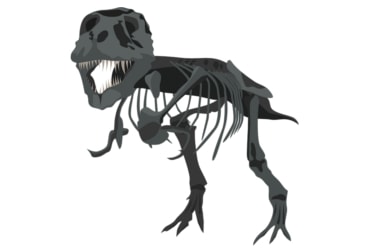
The fossil of one of the last living African dinosaur was discovered in a phosphate mine in northern Morocco.
The species, Chenanisaurus barbaricus, is reportedly one of the last ones to have survived on Earth before an asteroid strike wiped them out 66 million years ago
The project was carried out as a part of an international scientific collaboration that aims to conserve Morocco’s rich fossil heritage by helping create and study the country’s palaeontology collections.
The fossil study is being led by Milner Centre for Evolution at the University of Bath.
Its analysis suggests that a distinct dinosaur fauna evolved in Africa following the breakup of the Gondwana supercontinent in the middle of the Cretaceous period.
The new species is understood to be the smaller African contemporary of the North American T-Rex.
Almost nothing is known about the dinosaurs that lived in Africa at the end of the Cretaceous period 66 million years ago, just before their extinction.
Most of the fossils have been discovered from marine rocks.
The study revealed that the fragment belonged to an abelisaur, two-legged predators like T. rex and other tyrannosaurs with a shorter snout and tinier arms.
The species were known to be the top predators at the end of the Cretaceous period in Africa, South America, India, and Europe.
Unlike the abelisaurs, who had very short arms, the newly discovered dinosaur- Chenanisaurus barbaricus- stood on two legs and had stumpy arms.
The study of the fossil’s worn-out teeth reveals that it was a predator and unlike the partially feathered T. rex, Chenanisaurus had only scales and its brain was much smaller and its face, shorter and deeper.
Dinosaurs: Know More- Dinosaurs are known to have lived between 230 and 65 million years ago, a period that is known as the Mesozoic Era.
- The period is many million years before the first modern humans, Homo sapiens, appeared.
- Scientists divide the Mesozoic Era into three periods: the Triassic, Jurassic and Cretaceous.
- The Cretaceous Period was the last and longest period of the Mesozoic Era.
- It began 145 million years ago and ended 66 million years ago, lasting for approximately 79 million years. It followed the Jurassic period and ended with the extinction of the dinosaurs.
- The period may have seen more dinosaurs than ever before.
- Some of the dinosaur species that evolved during this time include Triceratops, Centrosaurus, armoured Ankylosaurus and the large carnivore Tyrannosaurus.